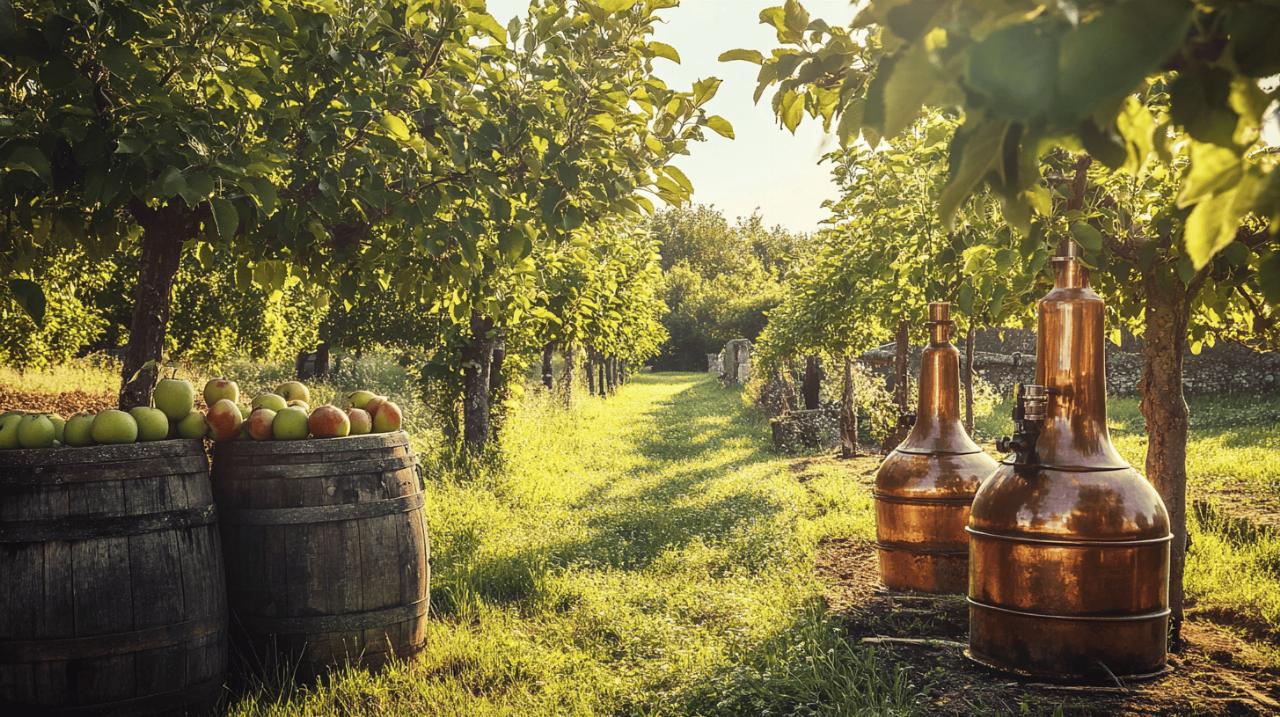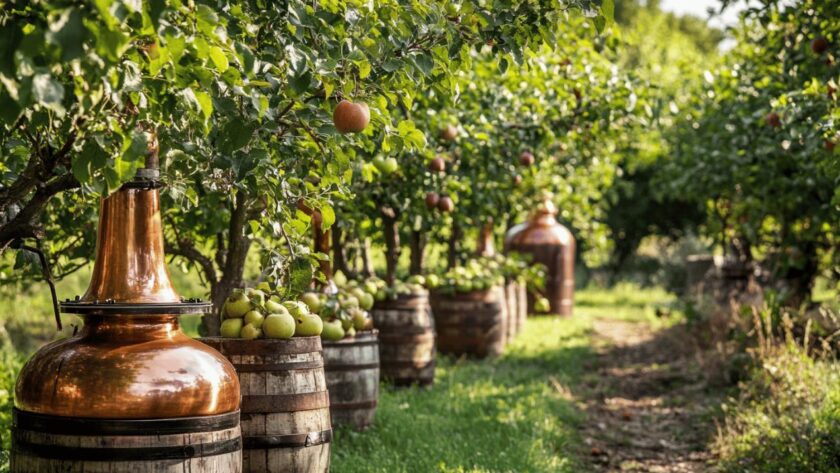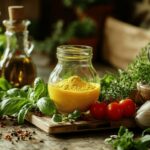In the rolling countryside of Normandy, where apple orchards stretch across verdant hills and the Atlantic breeze carries the scent of ripening fruit, a tradition has thrived for centuries. Calvados, the celebrated apple brandy of France, embodies the soul of this northern region, transforming humble apples and occasionally pears into a spirit of remarkable depth and character. With its protected designation and time-honoured methods, Calvados is not merely a beverage; it is a testament to the patience of craft, the wisdom of terroir, and the artistry of distillation and ageing. Understanding how Calvados comesfrom its origins in the orchard to the refined elegance of a finished bottle reveals a journey steeped in heritage, skill, and the natural bounty of Normandy.
From Orchard to Cider: Selecting and Fermenting Normandy Apples
The Art of Apple Selection: Bitter, Sweet, and Bittersweet Varieties
The foundation of any exceptional Calvados lies in the apples selected from the orchards of Normandy. These are no ordinary eating apples; they are cider apples, cultivated specifically for their capacity to create complex and balanced flavours. The region boasts over two hundred permitted apple varieties, each contributing distinct characteristics to the final spirit. Distillers rely on a careful blend drawn from four principal families: sweet, sharp, bittersweet, and bittersharp. The sweet apples provide sugar and body, the sharp varieties contribute acidity and freshness, whilst the bittersweet and bittersharp types lend tannins and depth, essential for structure and longevity. This deliberate mixing of apple types ensures that the resulting cider, and ultimately the Calvados, possesses a harmonious balance of sweetness, acidity, and tannic complexity. Harvest season begins in September and continues through mid-December, with each variety picked at its peak ripeness to ensure optimal flavour development. The orchards themselves are a marvel of sustainable agriculture, supporting biodiversity without the need for irrigation, and the trees, numbering some three million across the region, are tended by around three hundred dedicated producers.
Crushing and Fermentation: Transforming Fruit into Cider
Once the apples have been gathered, the transformation begins in earnest. The fruit is meticulously washed and sorted to remove any imperfections before being crushed and pressed, often using a modern membrane press to extract the juice efficiently. The resulting must, rich with natural sugars and aromatic compounds, is transferred into fermentation vats where the magic of natural fermentation takes place. Over a minimum period of twenty-one days for Calvados and Calvados Pays d'Auge, and thirty days for Calvados Domfrontais, the must undergoes a slow conversion as wild and cultivated yeasts work to transform the sugars into alcohol. By the end of this process, the cider must achieve a minimum alcohol content of four point five per cent by volume, although many producers allow it to develop further for added complexity. For those crafting the finest Calvados, the cider may be aged for up to six months before distillation, allowing the flavours to mature and integrate. This patient approach to fermentation is crucial, as it lays the groundwork for the character and depth that will be refined through distillation and extended ageing.
Distillation and Ageing: Crafting the Spirit in Oak Barrels
Traditional distillation methods: pot stills and column stills
The distillation of Calvados is where the cider is elevated into a true spirit, and the method employed varies according to the appellation and the style the producer seeks to achieve. For Calvados Pays d'Auge, the appellation that has enjoyed protected status since nineteen forty-two, the rules are stringent: double distillation in traditional copper pot stills is mandatory. This method, reminiscent of the techniques used in Cognac production, involves heating the cider to separate the alcohol from the water and other components. The first distillation yields a liquid known as the petites eaux, which is then subjected to a second distillation to produce the bonnechauffe, a spirit that must not exceed seventy-two per cent alcohol by volume. This double distillation concentrates the flavours and aromas, resulting in a richer, more complex eau-de-vie. In contrast, the broader Calvados AOC and the Calvados Domfrontais appellation permit the use of continuous column stills, which produce a lighter, fruitier spirit. The Domfrontais appellation, established in nineteen ninety-seven, requires that at least thirty per cent of the cider be made from pears, lending a distinctive fruitiness and delicacy to the final product. Regardless of the method, the distillation process is a delicate balance, requiring both technical precision and a deep understanding of the raw materials.
The cellar master's role: ageing, blending, and achieving complexity
Following distillation, the young eau-de-vie embarks on perhaps the most transformative stage of its journey: ageing in oak barrels. French oak is the vessel of choice, and the spirit must rest for a minimum of two years for the standard Calvados AOC, and three years for the Pays d'Auge and Domfrontais appellations. During this time, the spirit interacts with the wood, drawing out colour, tannins, and a spectrum of flavours ranging from vanilla and spice to caramel and toasted nuts. The barrels themselves may be new or previously used, with new oak imparting more intense flavours and older casks allowing for a gentler maturation. Throughout this period, the cellar master plays an indispensable role, monitoring the evolution of each barrel and making decisions about blending. As the spirit ages, a portion of the alcohol evaporates, a phenomenon affectionately known as the angels' share. This natural reduction mellows the spirit, but it also means that the cellar master must carefully manage the strength, often adding water to achieve the desired bottling strength, which must be at least forty per cent by volume. Blending is an art unto itself, as the master selects and combines different ages and batches to create a Calvados of consistent style and complexity. The age classifications provide a guide to the spirit's maturity: Fine or Trois Étoiles indicates at least two years of ageing and offers fresh, fruity notes; Vieux or Réserve requires three years and brings more spice and caramel; V.O. or V.S.O.P. demands four years and delivers richer, more developed flavours; whilst X.O. or Hors d'Âge, aged for six years or more, presents the pinnacle of complexity with layered, sophisticated aromas.
Quality and Authenticity: Understanding Appellation d'Origine Contrôlée Regulations
Terroir and tradition: how aoc standards preserve calvados heritage
 The integrity and authenticity of Calvados are safeguarded by the Appellation d'Origine Contrôlée system, a framework that governs every aspect of production from the selection of fruit to the final bottling. There are three distinct AOCs for Calvados, each reflecting the unique terroir and traditions of its region. The Calvados AOC, established in nineteen eighty-four, covers most of Normandy and permits the use of continuous column stills, producing a lighter, more immediately accessible spirit. The Calvados Pays d'Auge AOC, the oldest and most prestigious, requires double distillation in pot stills and results in a richer, more concentrated brandy. The Calvados Domfrontais AOC, granted in nineteen ninety-seven, mandates the inclusion of at least thirty per cent pears and employs single distillation in column stills, yielding a fruitier, more delicate character. These regulations are not merely bureaucratic formalities; they are a guarantee of quality and a means of preserving the traditional methods that have been refined over generations. By stipulating everything from the varieties of apples used to the minimum ageing periods and distillation techniques, the AOC system ensures that each bottle of Calvados is a genuine expression of its place of origin and the skill of its maker.
The integrity and authenticity of Calvados are safeguarded by the Appellation d'Origine Contrôlée system, a framework that governs every aspect of production from the selection of fruit to the final bottling. There are three distinct AOCs for Calvados, each reflecting the unique terroir and traditions of its region. The Calvados AOC, established in nineteen eighty-four, covers most of Normandy and permits the use of continuous column stills, producing a lighter, more immediately accessible spirit. The Calvados Pays d'Auge AOC, the oldest and most prestigious, requires double distillation in pot stills and results in a richer, more concentrated brandy. The Calvados Domfrontais AOC, granted in nineteen ninety-seven, mandates the inclusion of at least thirty per cent pears and employs single distillation in column stills, yielding a fruitier, more delicate character. These regulations are not merely bureaucratic formalities; they are a guarantee of quality and a means of preserving the traditional methods that have been refined over generations. By stipulating everything from the varieties of apples used to the minimum ageing periods and distillation techniques, the AOC system ensures that each bottle of Calvados is a genuine expression of its place of origin and the skill of its maker.
Final Touches: Adjusting Strength and Bottling the Finished Spirit
Once the spirit has reached the desired maturity and character, the final steps involve adjusting the alcohol content and preparing the Calvados for bottling. Water may be added to reduce the strength to the legal minimum of forty per cent by volume, although many producers prefer to bottle at higher strengths to preserve the intensity of flavour. The precise adjustments are made with care, as even small changes can alter the balance and mouthfeel of the spirit. After blending and dilution, the Calvados is filtered to remove any sediment and ensure clarity, though some producers choose minimal filtration to retain more of the natural texture and flavour. The spirit is then bottled, labelled, and made available for enthusiasts around the world to enjoy. Each bottle is a culmination of years of meticulous work, from the tending of the orchards to the patient ageing in the cellar, and represents a link to the heritage and landscape of Normandy. The finished Calvados is not just a spirit; it is a story told through taste, a narrative of tradition, terroir, and the enduring dedication of those who craft it.
Enjoying calvados: tasting notes and perfect food pairings
A Spectrum of Aromas: Fresh Apple Notes to Rich Oak-Aged Flavours
Tasting Calvados is an exploration of a vast aromatic landscape, shaped by the apples, the distillation method, and the years spent in oak. Younger expressions, such as those labelled Fine or Trois Étoiles, offer vibrant, fresh apple notes with a lively acidity and a touch of floral sweetness. As the spirit matures, the influence of the oak becomes more pronounced, introducing layers of vanilla, baking spices, caramel, and toasted nuts. Older Calvados, particularly those classified as X.O. or Hors d'Âge, present a remarkable complexity, with the apple character evolving into dried fruit, honey, and rich toffee, whilst the oak contributes deeper notes of leather, tobacco, and dark chocolate. The Pays d'Auge expressions, with their double distillation, tend to be richer and more concentrated, whilst the Domfrontais offerings, with their pear content, are often lighter and more delicate, with a distinctive floral fruitiness. Unlike cognac and Armagnac, which are made from grapes, Calvados retains a pronounced fruitiness that sets it apart, making it a unique and versatile spirit. Enjoying Calvados neat, at room temperature, allows the full spectrum of aromas to unfold, whilst serving it on the rocks can soften the alcohol and highlight the fruit. It also serves as an excellent base for cocktails, such as the Apple Brandy Old Fashioned or the classic Jack Rose, where its fruity character adds depth and interest.
Pairing calvados with food: elevating your dining experience
The versatility of Calvados extends beyond the glass, as it pairs beautifully with a wide range of foods, enhancing both savoury and sweet dishes. Cheese is a natural companion, with the spirit's acidity and fruitiness cutting through the richness of varieties like Camembert and cheddar, both of which hail from Normandy and share a regional affinity with Calvados. Charcuterie, with its salty, fatty character, is equally well complemented by the bright apple notes and spice of the brandy. For main courses, roast pork is a classic pairing, as the sweetness and complexity of Calvados echo the flavours of the meat and any apple-based accompaniments. The spirit also shines alongside desserts, where its rich, caramelised notes harmonise with apple tarte tatin, crème brûlée, and other sweet confections. The key to successful pairing lies in matching the intensity and character of the Calvados to the dish: lighter, younger expressions work well with fresh, delicate flavours, whilst older, more complex spirits can stand up to richer, more robust fare. Whether enjoyed as a digestif after a meal, a contemplative sipper on a quiet evening, or a creative ingredient in the kitchen, Calvados offers a world of possibility, inviting you to explore the heritage and craftsmanship of Normandy with every sip.


